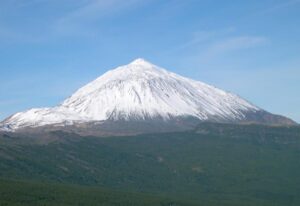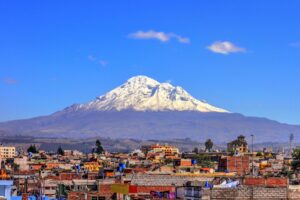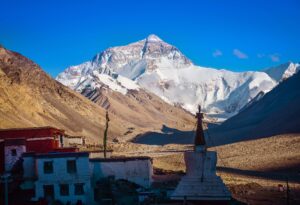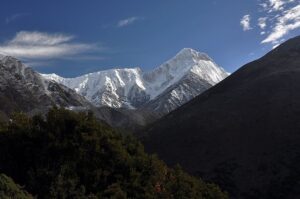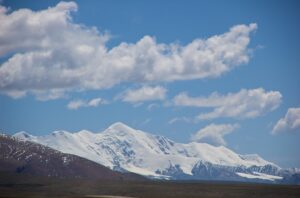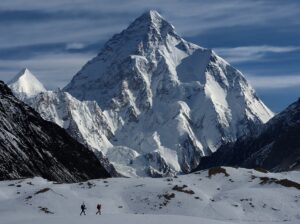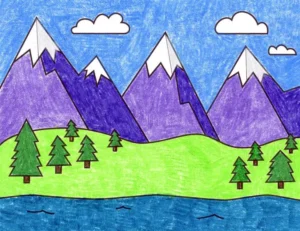In the Middle Ages, Teide (12,188 feet), a volcano in the Tenerife Islands, was the world’s highest mountain. The Swiss Alps apparently hadn’t been noticed yet.
For several centuries, Chimborazo (20,549 ft.) was the world’s highest mountain, or so people thought. Why wouldn’t they? Nearly 240 feet higher than Alaska’s Denali (aka Mount McKinley), it’s impressively big.
Visible from inhabited lowlands in India, and a mile higher than Chimborazo, Nanda Devi (25,643 feet) was the world’s highest mountain in people’s minds until 1808.
When the British began surveying the Himalayas, another mountain visible from the lowlands (in good weather), Dhaulagiri (26,795 feet), colloquially known as “The Mountain of Storms,” became the world’s highest known peak. It held the title from 1808 to 1838.
After fighting one of their colonial wars from 1814 to 1816, the British built a resort town for themselves at Darjeeling, from where they could see an immense mass of rock and ice floating above the clouds on the horizon. In 1838, they crowned Kanchenjunga (28,126 feet) the world’s highest mountain. It certainly is a big one.
In 1852, Radhanath Sikdar, an Indian mathematician employed by the British Great Trigonometric Survey, informed his boss, Surveyor General Andrew Waugh, that his calculations showed Peak XV, which Waugh named Everest after his predecessor (although to natives it was known variously as Sagarmatha or Chomolungma, to be the highest mountain in the region and likely the world. He worked out its height as 29,000 feet; he was off by 32 feet (it’s 29,032 feet). From the Rongbuk Monastery in Tibet, it has a very impressive wall. This wasn’t the end of it, however.
In the late 19th century, European explorers heard of, and then saw, a very high mountain in western China whose name translated from Tibetan as Minya Konka, although today everyone calls it Gongga Shan. A survey in the 1870s from a great distance away put its height at 24,900 feet, which wasn’t far off; it’s 24,790 feet, impressive enough, but by then numerous higher mountains were known to exist. Then in 1929 an Austrian-American explorer named Joseph Rock created a sensation when he miscalculated its height as 30,250 feet and claimed it was the highest mountain in the world; the National Geographic Society was skeptical, and in 1930 a German survey put its height back to 24,900 feet. It looks big from a distance, but if you carefully study all the photos here, it lacks the bulk of the real giants.
During World War 2, pilots flying 30,000 feet over the Himalayas thought they looked up at a distant mountain named Amne Machin. Joseph Rock stuck his fingers (and pencil) in this pie, too, though he rated it only 28,000 feet. It was an illusion; this mountain, though it has a lot of mass, is only 20,610 feet high, which is is still higher than anything in North America.
After Amne Machin was laid to rest, that should have ended challenges to Everest’s supremacy, but there was one more. K2, its survey designation, had no native name because it isn’t visible from historically inhabited areas; for a while the British called it Mount Godwin-Austen, but today everyone uses “K2.” It was spotted and sketched by Thomas Montgomerie of the Great Trigonometric Survey in 1856 from a 16,000-foot peak about 130 miles away. K2 lies in the heart of the mighty Karakoram range, the world’s greatest concentration of very high mountains, which wasn’t penetrated by Western explorers until the 1890s. Its height is 28,251 feet, second to Everest, but in 1986 inaccurate satellite measurements emanating from the University of Washington putting its height a thousand feet higher made their way into the news media, briefly causing a sensation until those figures were retracted. Below is the classic view of K2’s massive pyramid from Concordia, the confluence of the Baltoro and Godwin-Austen glaciers.
Geologists tell us it’s not possible for an earthly mountain to be much higher than Everest because its weight would push it down into the Earth’s crust. (Mars has a much bigger mountain, Olympus Mons, but is a smaller planet with less gravity.) But there’s no limit to how big a mountain you can imagine! Below is what a range of super-peaks springing up out of the Kansas prairie might look like. These mountains can be as high as you like, because there’s no gravity where they exist.
